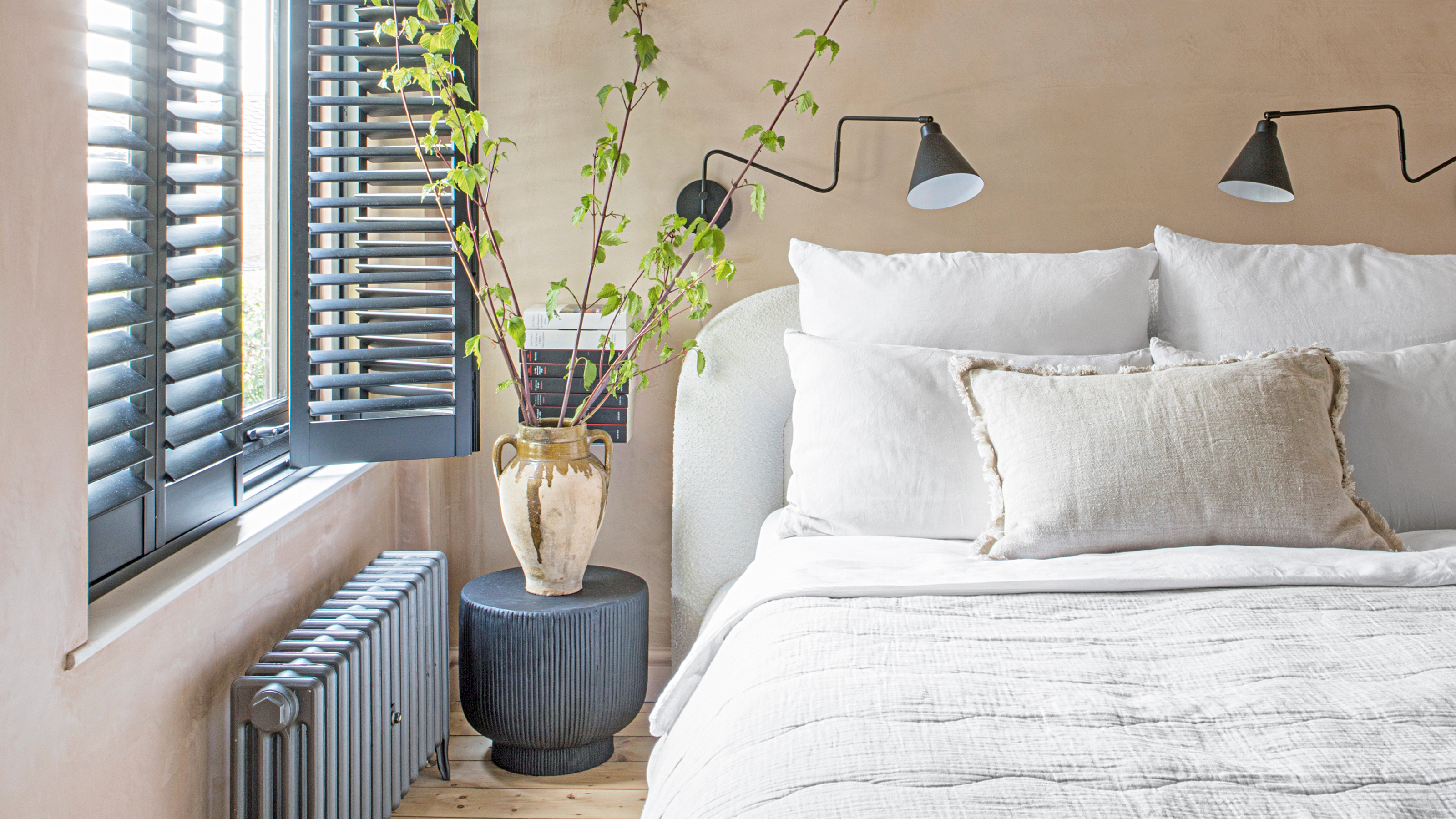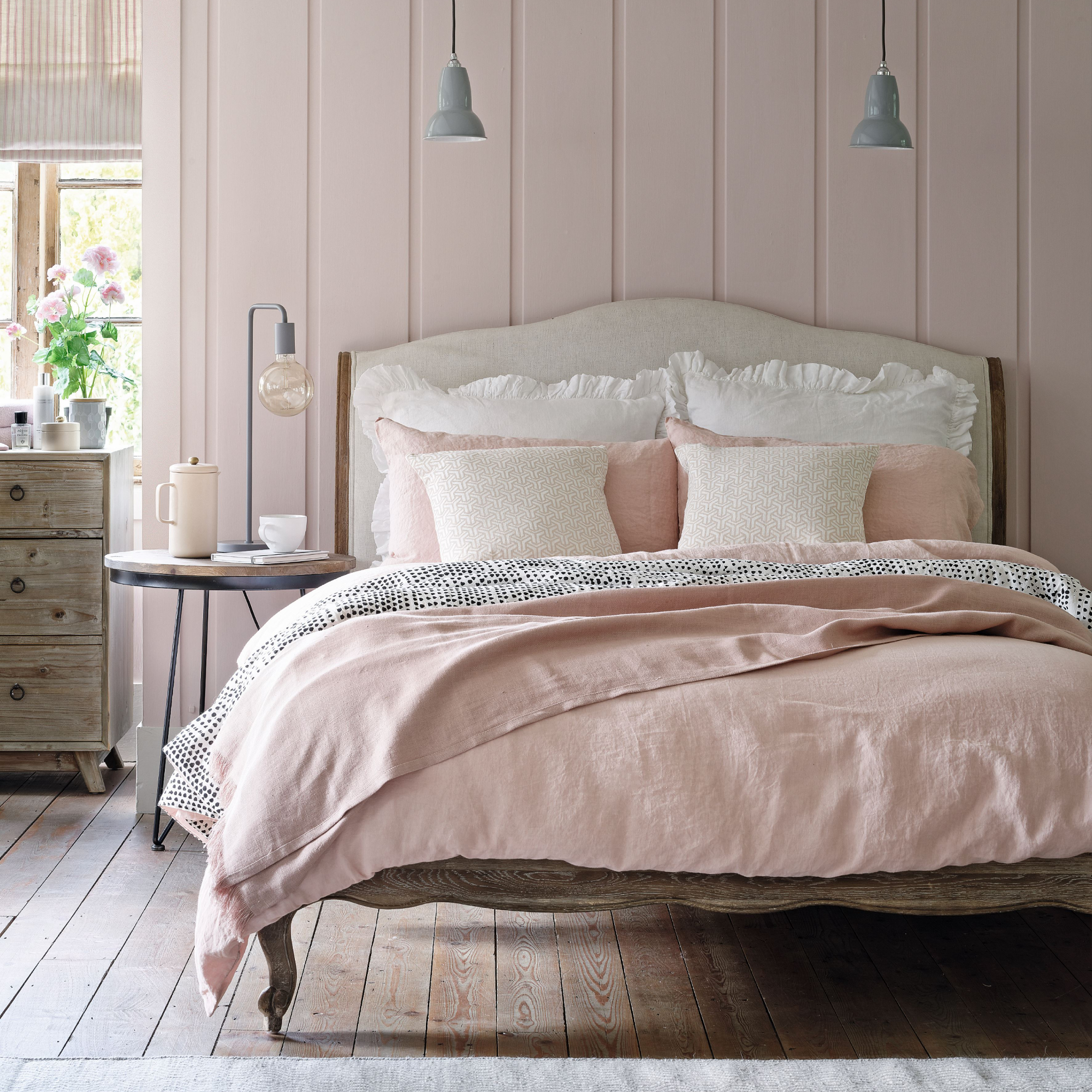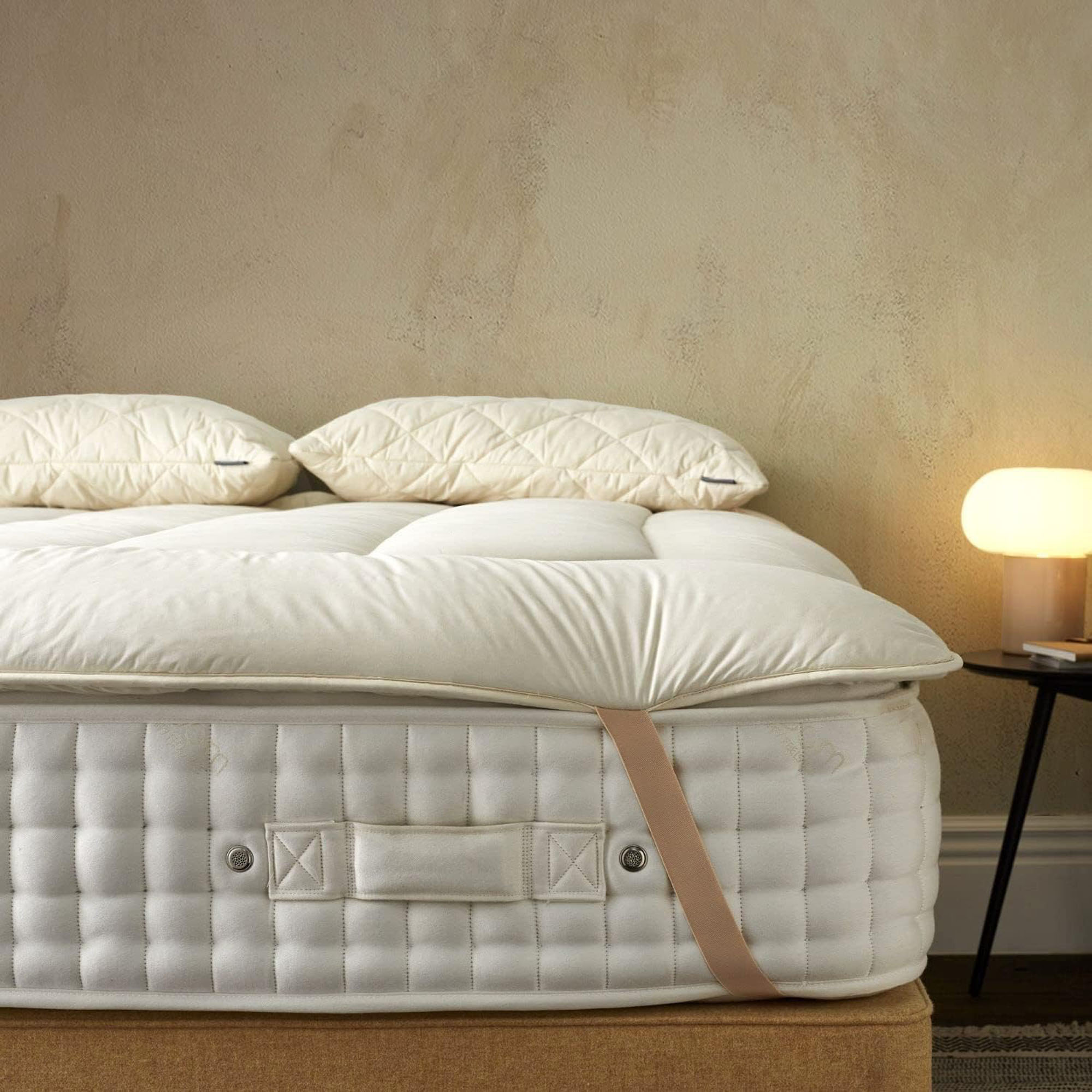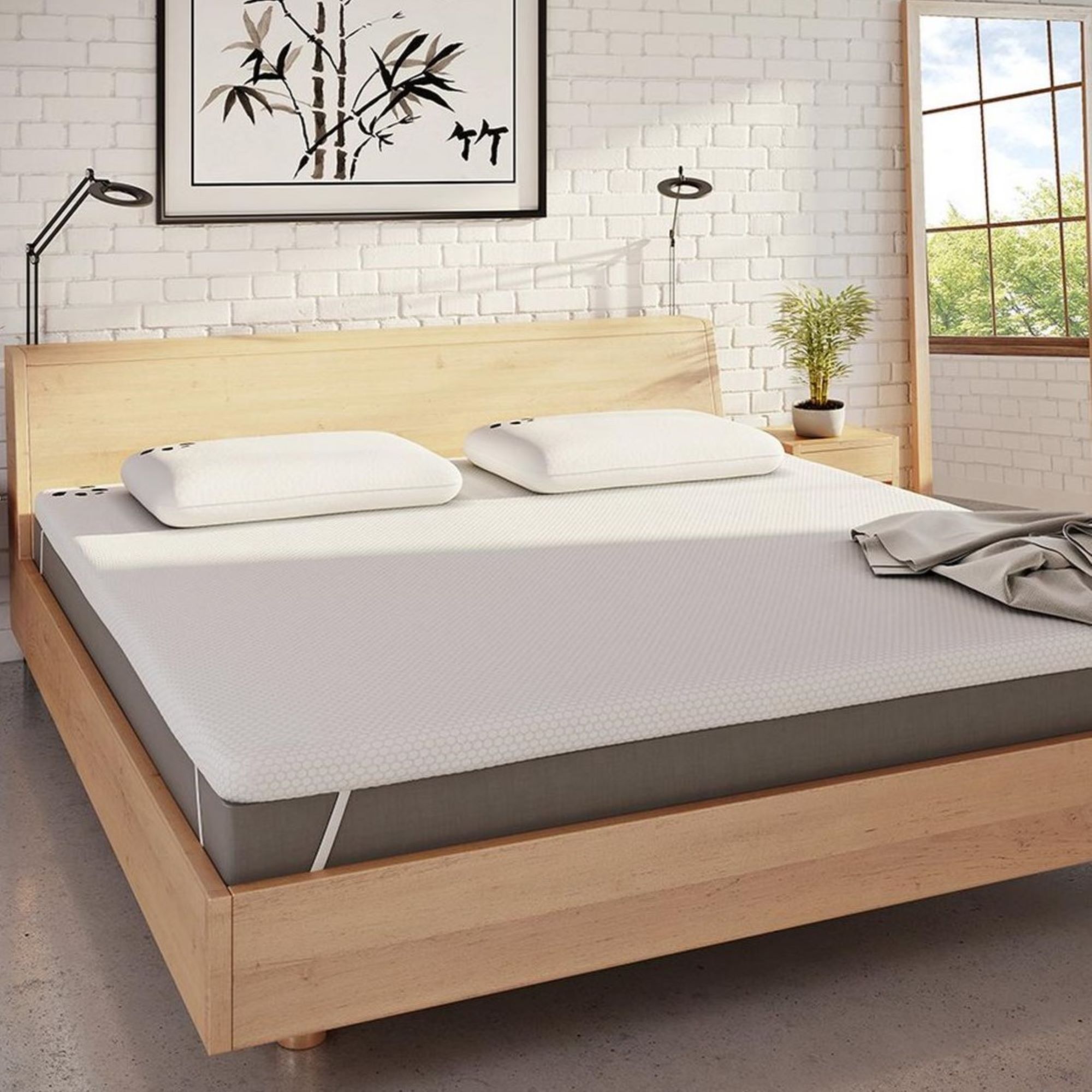What type of mattress is best for allergies? Sleep and allergy experts reveal the features that will ease symptoms
I've spoken to several experts to uncover everything you need to know about what type of mattress is best for allergies


Choosing a new mattress is difficult at the best of times. But if you suffer from allergies then you have an extra layer of things to think about. Having spent two years testing mattresses, and having a kid with dust-mite allergies, I’m investigating allergen-proof mattresses for you.
Looking for the best mattress isn’t totally straightforward. Everyone likes different things in a mattress. Some love memory foam, some love sprung mattresses. But if you have allergies, you’ll be looking for something that doesn’t flare up your symptoms. This guide is going to help you on your hunt.
What type of mattress is best for allergies?
Mattresses tend to fall into four types: foam/memory foam, pocket sprung, open-coil and hybrid. There are plenty of hypoallergenic mattresses in each category. When thinking about hypoallergenic mattresses, it’s about looking at known allergies against the fibres inside the mattress.

‘It's important to understand that it is impossible to state categorically that any mattress is allergy friendly in the broadest sense,’ says Hunish Sembhi, Head of Endorsements at Allergy UK. ‘This is because it is possible to be allergic to anything, so identifying the exact allergen to which someone is reacting is very important.’
‘It is important to understand what might trigger your allergies,’ agrees Laura Tudor, Bedroom Furniture, Filled Bedding and Mattress buyer at John Lewis & Partners. ‘Overall mattresses made from man-made materials are generally recommended.’
The most common house allergy from dust is actually caused by dust mites. ‘House dust mites are found in every home,’ says Chris Tattersall, Sleep Expert and MD of Woolroom. ‘These microscopic critters snack on dead skin cells and thrive in warm and humid environments. While relatively harmless as they do not bite, the enzymes in their faeces and hard shells cause rhinitis (runny nose and eyes), wheezing, asthma and even eczema, making them the most common indoor allergen in the UK.’
Now we’re all thoroughly grossed out, what does that mean for mattresses?
Sign up to our newsletter for style inspiration, real homes, project and garden advice and shopping know-how

As well as the made-made fibres John Lewis & Partner’s Laura Tudor mentioned, natural fibres such as silk, bamboo and wool are all also naturally hypoallergenic.
‘A wool mattress is an excellent choice for those with allergies,’ says Chris Tattersall of Woolroom. ‘Wool boasts antimicrobial properties; therefore, a wool mattress will offer protection against bacteria, mould, mildew, and other microbes – naturally making it a great hypoallergenic option for allergy sufferers.’
Is foam or spring mattresses better for allergies?
Synthetic fibres such as foam mattresses are often suggested as they are more dense and there’s less chance for dust mites to permeate. Microfibre is a similar story. However, sprung mattresses can be just as good, depending on what they’re made from. There’s no straightforward answer here, and you need to do some digging on fibres in each mattress to ensure you’re happy with what’s inside.
What are the best brands to shop for these type of mattresses?
Before purchasing a new mattress, it’s vital you conduct thorough research,’ says Philippa Warford at the National Bed Federation. ‘You should read independent reviews and buy from a reputable retailer, not an online marketplace and never second-hand. Bed Advice UK also offers a product finder tool to assist consumers in narrowing down their search based on mattress fillings, which can be especially helpful for individuals with allergies.’
‘When looking for a mattress, we do usually advise our community to review the products that Allergy UK has endorsed with an Allergy UK Seal of Approval or Allergy Friendly Product Award,’ says Allergy UK’s Hunish Sembhi. ‘These endorsed mattresses will have undergone scientific review with independent laboratory testing to ascertain if they are indeed a benefit for someone who is affected by the allergy for which the mattress is designed to benefit.’
Silentnight
‘Some mattresses have hypoallergenic treatments on them such as our Silentnight Revive + range,’ points out Laura Tudor at John Lewis & Partners. ‘We also offer a range of anti-allergy mattress covers and bedding, which can help to keep symptoms at bay. Always discuss any concerns with our Partners in store who will be able to help.’
Panda
Panda London is one of the leading bamboo mattress brands. Their memory-foam mattresses are all infused with hypoallergenic, temperature-relating and antimicrobial bamboo. They offer a great balance of synthetic and natural fibres in one mattress.
Woolroom
Woolroom offers fantastic natural-fibre wool mattresses that feel premium if natural fibres are your preference and you want a sprung rather than foam or hybrid mattress.
Naturalmat
Latex is also a brilliant hypoallergenic material. It’s dense so those dust mites can’t get in, and is resistant to mould and mildew. Naturalmat makes mattresses that contain layers of natural latex between other natural fibres, for the best of both worlds.

What is the difference between anti-allergy versus hypoallergenic?
When you see the term ‘hypoallergenic’, it means a product contains materials that are less likely to trigger allergies. Whereas anti-allergy means the product has been actively treated to prevent dust mites worming their way in. But as we’ve been at pains to point out, there are no guarantees here.
How long do hypoallergenic mattresses last?
A hypoallergenic mattress will last as long as any other mattress. There are signs your mattress has seen better days – these go for hypoallergenic mattresses as well as ‘standard’ mattresses.
‘No matter the type of mattress you choose, get the most out of it by following the manufacturer’s care instructions,’ advises Philippa Warford of the National Bed Federation. ‘If you find that your mattress is no longer providing the comfort and support you need for a good night’s sleep, it is probably time to replace it.’
If you’re an allergy sufferer, it’s a good idea to find out how to clean your mattress to ensure those allergens are kept at bay as much as possible.
‘We would advise that all mattresses are regularly maintained by vacuuming the mattress, changing bedsheets to reduce the build-up of allergens and cleaning sheets on a 60º wash cycle to kill the house dust mites,’ says Hunish Sembhi from Allergy UK.

What to look for in an allergy-friendly mattress
Breathable
Look for mattresses that talk about breathability and air flow. This will help stop mould and mildew from building up in them and also make them less hospitable for dust mites.
‘Dust mites particularly find sanctuary in mattresses due to the humidity given off from our bodies when we sleep,’ explains Chris Tattersall from Woolroom.
So ideally you want a mattress that keeps you cool and draws moisture away from your body. This can be done via engineering. Simba Hybrid Pro, for example, is layered with materials to keep you cool. A wool layer at the top is hypoallergenic and a great temperature regulator, and this is complemented by open-structure foam to allow airflow through the mattress.
You also want to look at what materials are in the mattresses that will help keep things cool and dry. Which leads us on to…
Fibres
The fibres in your mattress are going to have a big impact on making a mattress allergy friendly. Fibres that are naturally good at moisture wicking will help those with skin complaints. These include wool, silk, linen, cashmere, cotton and bamboo, as well as synthetic microfibre. Tightly packed fibres such as foam and latex are also great at repelling allergens.
FAQs
What type of mattress is best for asthma?
‘Mattresses are usually a problem for people who are affected by House Dust Mite allergies, which also commonly affect those who suffer with asthma,’ says Hunish Sembhi from Allergy UK. ‘When choosing a mattress, it is always important to check the allergies for which it claims to be safe, as well as the ingredients for any treated fabrics.’
‘For those that suffer with respiratory or skin allergies such asthma, eczema and psoriasis, opting for a wool mattress over a synthetic one will ensure fewer flare-ups and in turn, fewer sleep interruptions,’ advises Chris Tattersall of Woolroom.
Natural latex and organic cotton are also thought to be good fibres for asthma sufferers. Natural latex is very dense and not made using petrochemicals, where as synthetic foams are. This means natural latex mattresses don’t give off any potentially harmful chemicals that might cause respiratory issues.
As with everything mattress-related, do plenty of research – and in this case, do what makes sense for you and your triggers.

Zoe is a freelance journalist and content strategist. Her career has traversed kids' publishing, women's lifestyle magazines, luxury property and content marketing. She's worked for the BBC, STYLIST, Marie Claire, heat, Wallpaper*, InStyle, The Sunday Times Style, Ocado, Christie's and more. She now regularly writes about interiors and sleep for a range of media – what she doesn't know about mattresses isn't worth knowing.